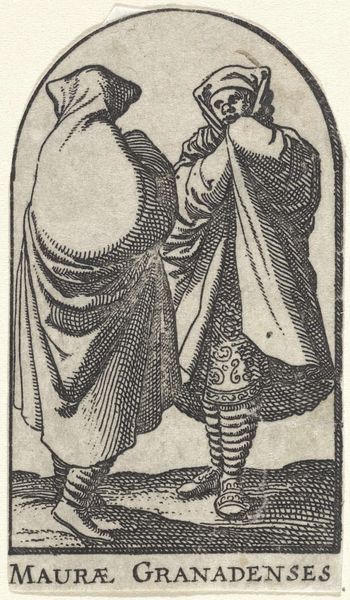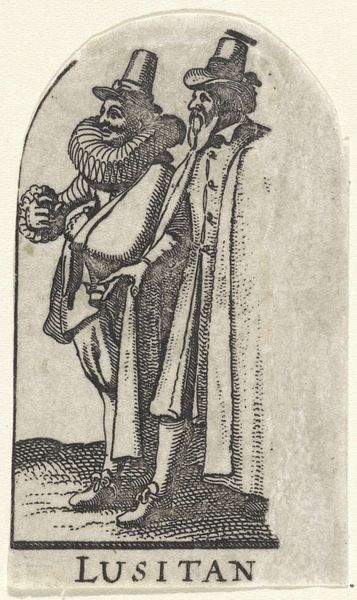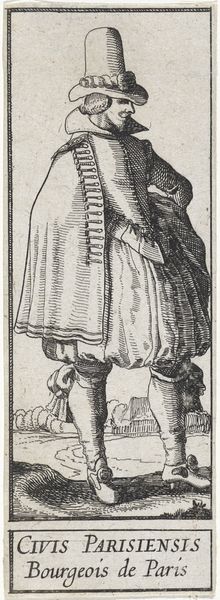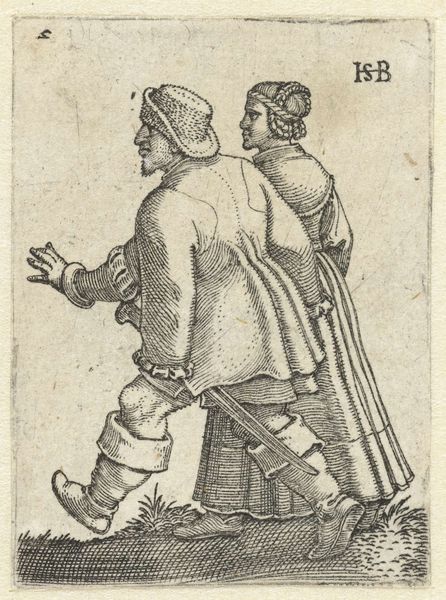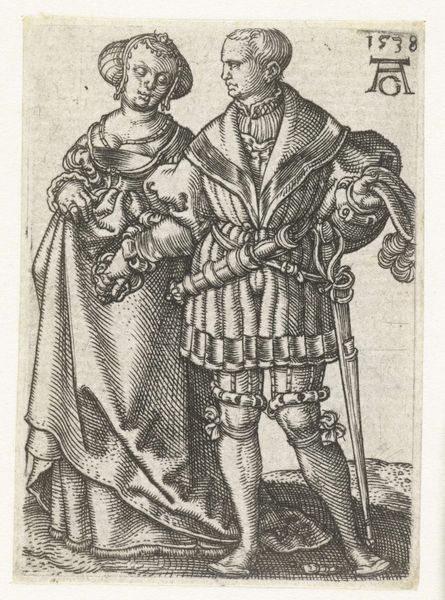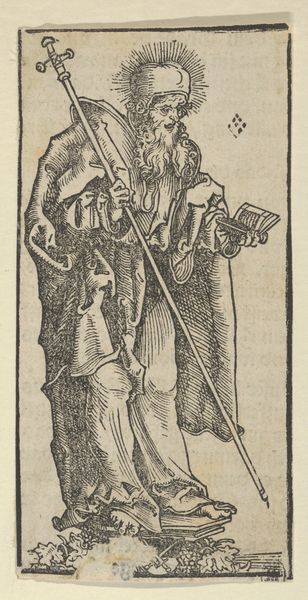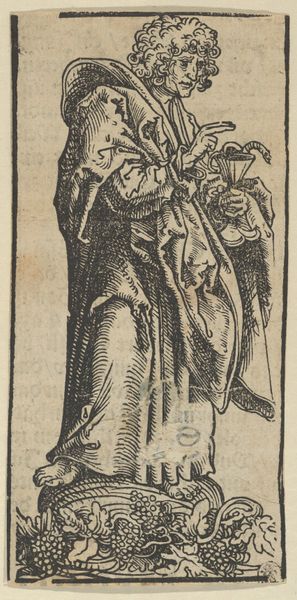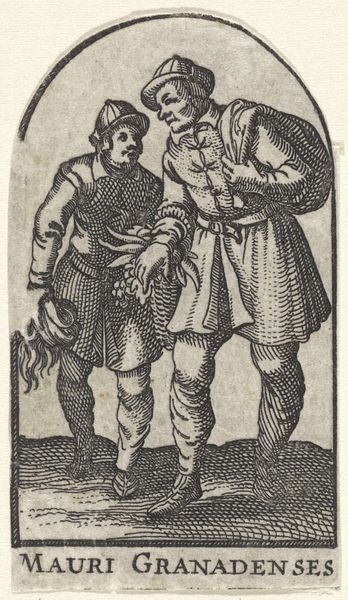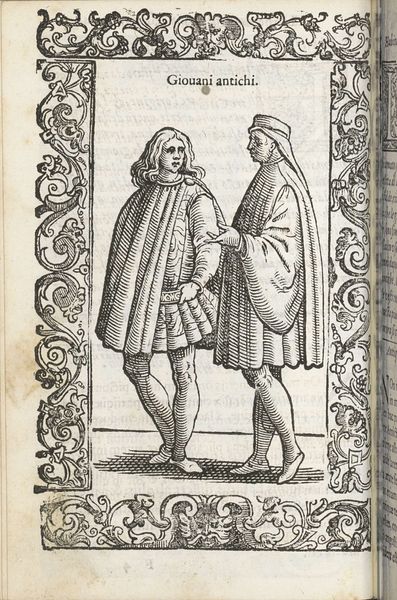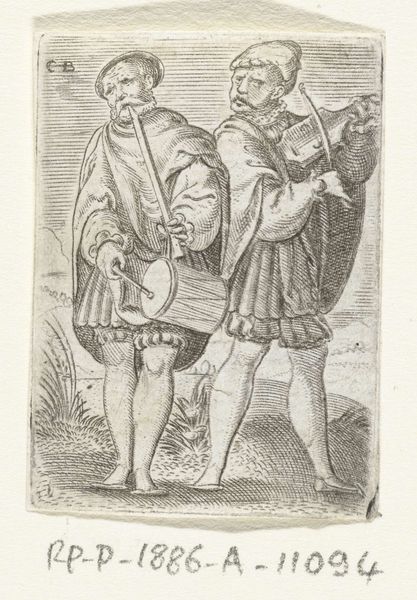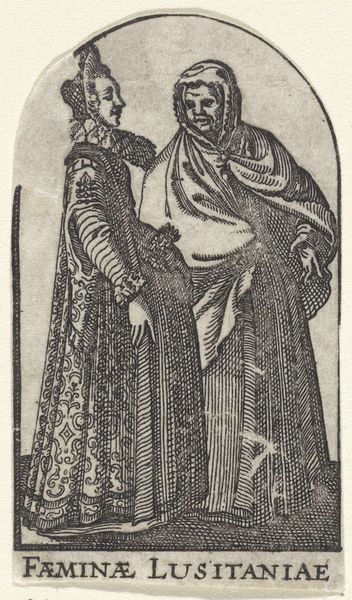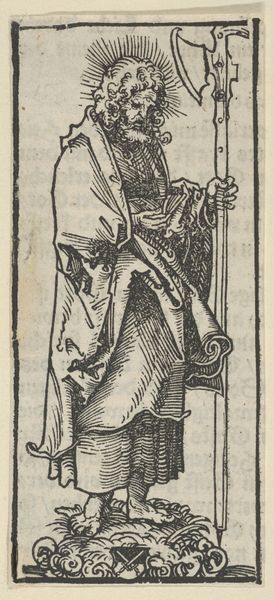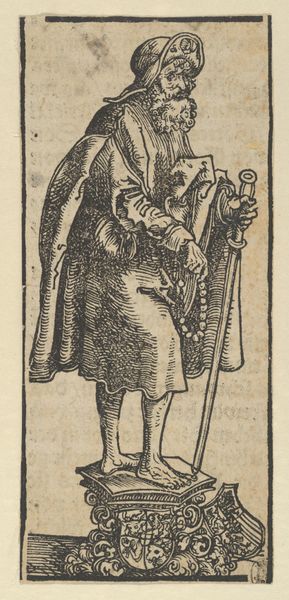
drawing, print, paper, ink, engraving
#
portrait
#
drawing
# print
#
pen illustration
#
mannerism
#
paper
#
ink
#
genre-painting
#
engraving
Dimensions: height 73 mm, width 42 mm
Copyright: Rijks Museum: Open Domain
Curator: Allow me to introduce you to "Gesprek tussen een man en een geestelijke," which translates to "Conversation Between a Man and a Cleric." This ink drawing and engraving on paper by Claes Jansz. Visscher dates roughly between 1596 and 1630. Editor: My first impression is one of stark contrast. The etching's dense cross-hatching on one figure against the relatively open rendering of the other creates a visual imbalance that intrigues me. Curator: Yes, the artist's technique certainly accentuates that dynamic. Consider how Visscher employed hatching and cross-hatching not merely to render form but to articulate a difference in status and presence between these two figures. The detail afforded to the man's flamboyant garb juxtaposed to the cleric’s simpler habit is certainly striking. Editor: Absolutely. And look at the lines, how rigid they are! Almost like wire, particularly around the garments. I wonder about the economic realities surrounding such detail, the hours poured into making a very reproducible image. Was Visscher highlighting the craft or simply the subject? Also, consider the paper; where did that originate? Curator: An astute observation! The contrast is not simply aesthetic. We see it mirrored in the composition. One figure advances; the other recedes. Note also the mannerist elegance in their posture and elongated forms. This tension suggests the possibility that this genre scene might speak to social anxieties prevalent at the time, as conveyed through design. Editor: That suggestion begs further examination into the labor involved in creating prints. Printmaking was laborious, but enabled distribution. Does the image critique Spanish identity ("Hispani" appears below), or perpetuate an idea of the society and culture the pair embodies for widespread consumption and judgment? What were the economics surrounding the materials themselves? Paper, ink, the press used? Curator: Those are relevant questions. The work complicates any singular interpretation. Perhaps by considering the interplay of forms and the almost allegorical staging of the two figures, we might more fully consider the conceptual design Visscher crafted. Editor: Indeed. The means of production speak volumes about societal values embedded into works we admire. By considering that labor we reveal how interconnected social class, economics, and artistic intention truly are. Curator: I concur. Hopefully, our examination encourages all to consider that art invites conversation from multiple perspectives. Editor: A fitting reminder to think critically and creatively, both inside and outside these museum walls.
Comments
No comments
Be the first to comment and join the conversation on the ultimate creative platform.
